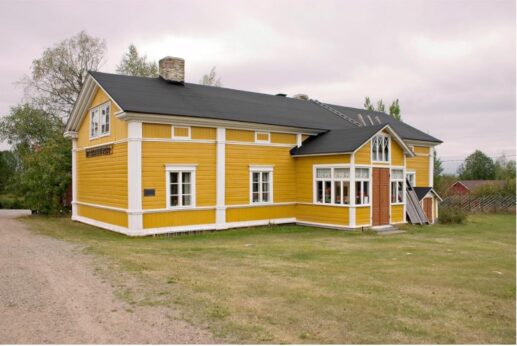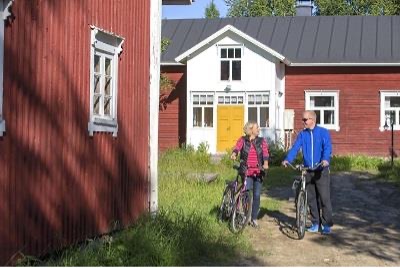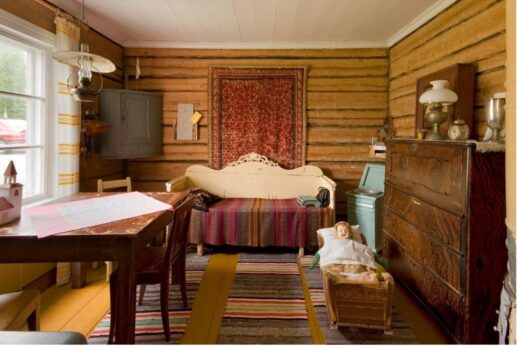
culture and history
In addition to its beautiful nature, Kemijärvi is rich in culture. Visit the Kemijärvi Cultural Centre to see the latest exhibitions, theatre performances or concerts by the Eastern Lapland Music Institute. The Cultural Centre is located in the city centre, on the shores of the beautiful Lake Pöyliöjärvi.
Kemijärvi Cultural Centre
In addition to its beautiful nature, Kemijärvi is rich in culture. Visit the Kemijärvi Cultural Centre to see the latest exhibitions, theatre performances or concerts by the Eastern Lapland Music Institute. The Cultural Centre is located in the city centre, on the shores of the beautiful Lake Pöyliöjärvi. The youth facilities and the city library are located in the same building.
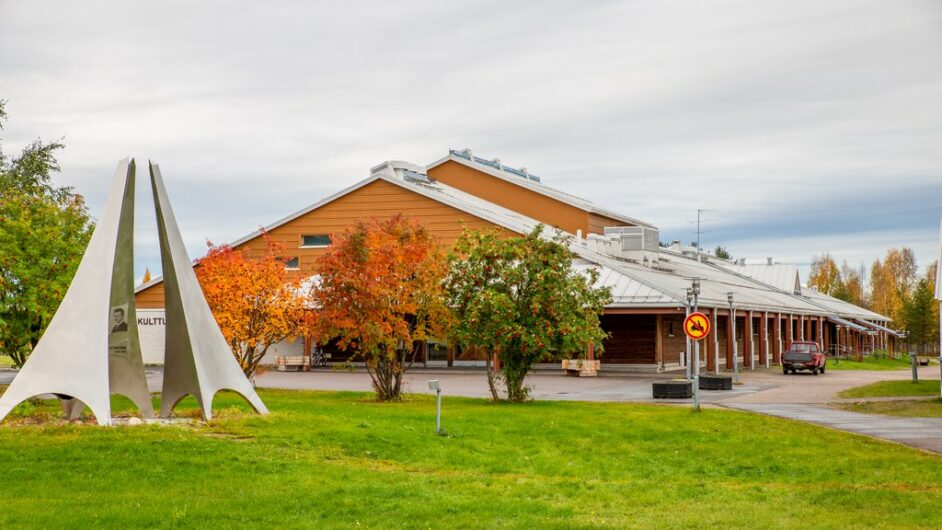
The 200-seat hall of the Cultural Centre is a performance arena for various art forms; music, film, dance and theatre, as well as an education, meeting and party space. In the lobby and the hall of the Cultural Centre, visual arts are on display, with monthly changing exhibitions. The premises of the Cultural Centre are available for rent to communities and associations.
In front of the house is a sculpture by the Dutch sculptor Lucien den Arend, “The Arctic Circle Opening”, and several sculptural sculptures made in the weeks of the sculpture.
The building also houses the Kemijärvi library and youth facilities. The North-East Lapland Music Institute is located next to the house.
Cultural Centre reservations:
Cultural Producer Sanna Saarikettu
+358 (0) 40 537 3491
Hietaniemenkatu 5, 98100 Kemijärvi, Finland
sanna.saarikettu@kemijarvi.fi
Art Centre Puustelli
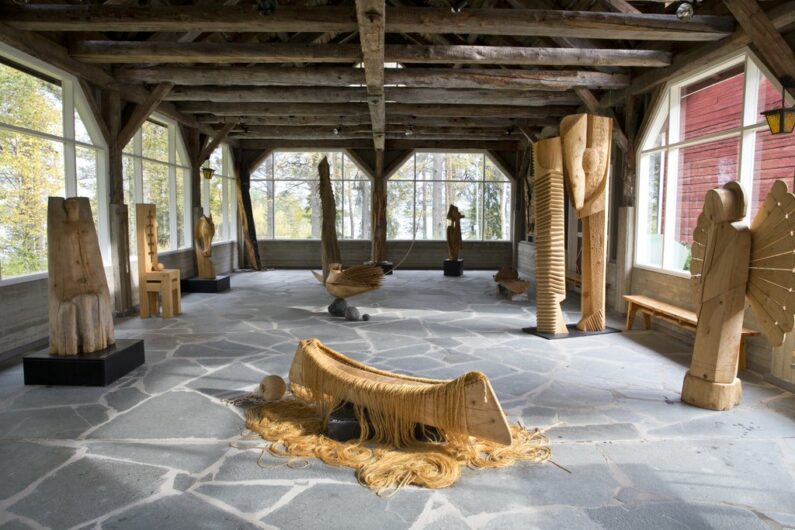
The valuable old Puustell farmstead in Kemijärvi’s Särkikanka is a must for cultural tourists interested in art and lakeside scenery. Puustelli was originally built in 1865 as the official house of forester Johan Gebhard on the shore of Lake Pöyliöjärvi. Johan Gebhard’s son Hannes Gebhard later became the founder of the Finnish cooperative movement. The Puustell site includes the official house, which has been restored as a banqueting house, a sleeping quarters and an exhibition hall for woodcarvings.
From 1985 Kemijärvi hosted the international sculpture event Kemijärvi Sculpture Festival until 2010. The sculpture exhibition brings together a comprehensive selection of sculptures from the Sculpture Week. The sculptures on display give a good overview of the different styles of woodcarving around the world. The exhibition is open during the summer. The exhibition hall is an old floating boathouse, which has been moved to the Puustell courtyard. A large number of sculptures have been placed around the city, inside commercial premises and along the outdoor trail of the Kuumaniemi pond.
Puustelli exhibition open during summer time.
Lepistöntie 19, 98120 Kemijärvi
+358 (0) 40 579 1644
posti@kemijarven-kuvanveistoviikot.fi
www.kemijarven-kuvanveistoviikot.fi/
Kemijärvi Church
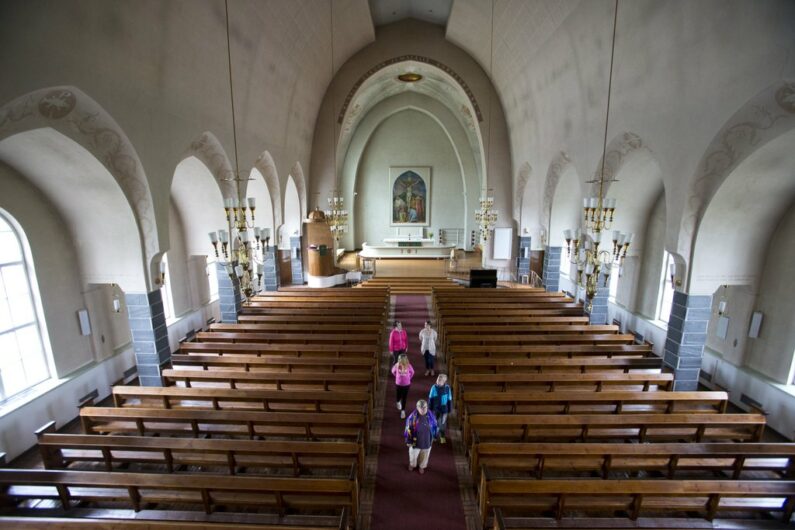
The Church of Kemijärvi is a building designed by Bertel Liljeqvist in Kemijärvi. The church was completed in 1950 and inaugurated in the following year. The current church of the Kemijärvi is the fourth one of its kind, inuagurated at Midsummer 1951. The church seats 850 people and features an organ with 41 stops build by Gerhard Schmid in the 1984. The altarpiece was painted by artist Aale Hakava, assisted by artist Uuno Särkelä.
The third church in the Kemijärvi was build between 1831 and 1832. This cruciform wooden church was destroyed during the Lapland War when the Germans withdrew from Kemijärvi. Dating back to 1776, the Bell Tower survived the ravages of the wars. It was build based on a design by Ylikiiminki-based Heikki Väänänen.
You can also visit the churchyard, the old cemetary and the church on a guided tours in summer.
The Monument to the Finnish Civil War is situated arcross from the main terrace of the church. It was made Emil Wikström and dates back to 1925. The monument was physically hauled along the ice from the other side of lake Pöyliönjärvi.
Cultural Route of Eastern Lapland
Welcome to the Eastern Lapland Cultural Tourism Route!
The route includes a variety of destinations from Kemijärvi, Salla, Savukoski and Pelkosenniemi/H Pyhätunturi. It is designed to highlight the traditional and cultural sites of Eastern Lapland and to show what there is to see and do in the region at different times of the year.
This brochure describes some of the destinations on the route. All the sites are presented in detail at www.citynomadi.com. You can download the app from the Google Play or App Store. You can also follow, for example, the Eastern Lapland Military History Route.
Räisälä Ferry
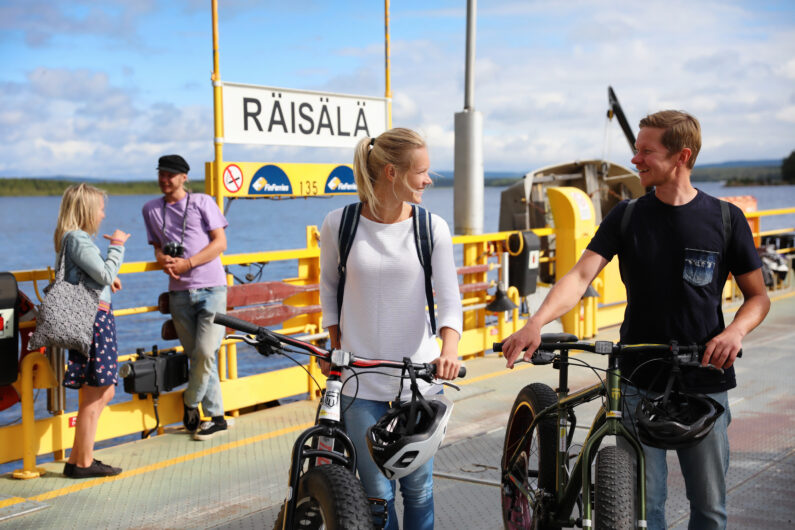
Räisälä is a traditional lakeside village with a rustic landscape. The area is dominated by mountain landscapes, the largest of which is Suomutunturi, over four hundred metres high.
The first permanent residents of the old Lappish field in Lappiranta were found around 1670. The boat has been a means of transport for water travellers since time immemorial, the four-penny row from Räisälä to Kemijärvi was covered in a day. In addition, a passenger boat once operated to Räisälä. In winter, horse-drawn sleighs used to run on the lake’s ice.
Today, the only ferry in Lapland operates between Räisälä Lappiniemi and Haaparanta, and in winter there is an ice road across the strait. The shortest route to Kemijärvi is along a beautiful scenic road through the village of Soppela or the longer route through the village of Joutsijärvi.
Contact
98720 Suomulahti, Kemijärvi
www.finferries.fi
Taivaan Tulet (Aurora Borealis) TV series
Taivaan Tulet is a drama series set between the fictional and the real world in Kemijärvi, Finland. Kemijärvi’s beautiful landscapes, diverse events and the broken boundary between the imaginary and the real world have been riveting Finnish TV audiences since 2007.Season 1 was written by Kari Väänänen together with Timo Parvela, with seasons 2-4 written by Kari Väänänen.
The series stars Rauni Väänänen, a senior police officer who returns from Espoo to her hometown of Kemijärvi to investigate her father Pekka Väänänen’s behaviour. Rauni’s mother has died. Rauni has to adapt to a different kind of life and the way of working is different from the south. Rauni is taught the ropes by Chief of Police Kauko Junni and Rauni’s police partner Aimo Peltoniemi. Mayor Sinikka Ström and doctor Erkki Viherkoski are also an important part of Rauni’s everyday life in the north.
The music is by Ismo Alanko. The roles are played by Ria Kataja, Vesa Kietäväinen, Sari Havas, Juha Veijonen, Kari Väänänen and Risto Salmi. The series will also feature actors from the north and several local assistants. The three main characters of the drama series can be found in Kemijärvi’s main library. Artist Erja Mikkola has made Jetsu, Rauni and Aimo into visual cranes, who are situated to the Kemijärvi Main Library. The TV series can be seen on Yle (Finnish Broadcasting) TV Arena
Self-map of the description sites
sky entry description sites.pdf
